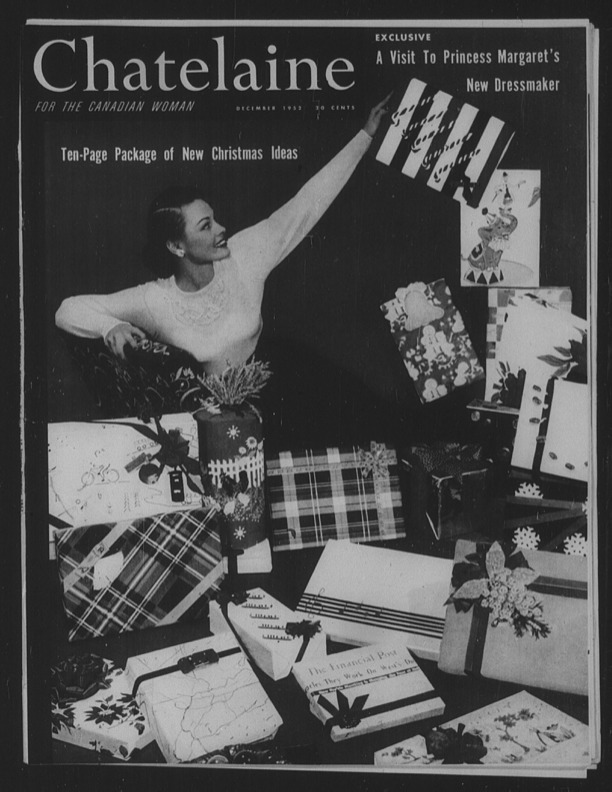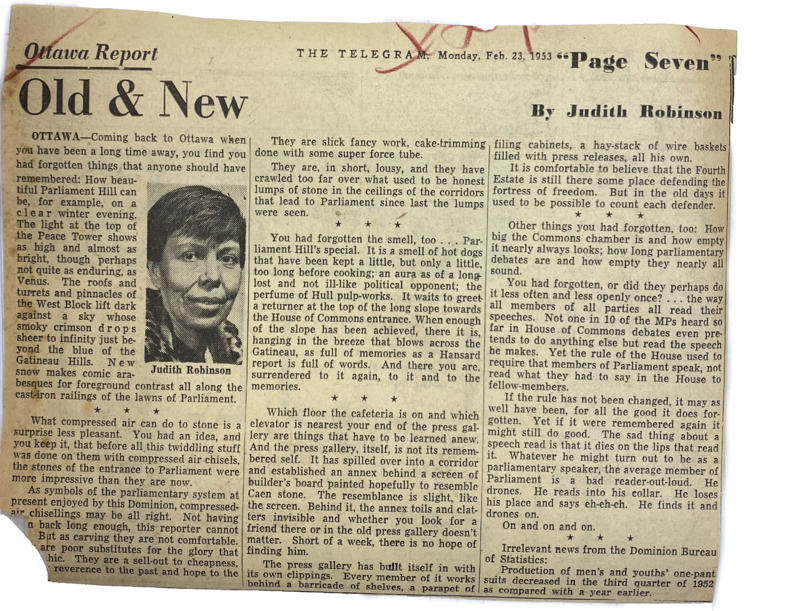Comparing Telegram and Chatelaine
Writing for The Telegram in the paper’s new Op-Ed “Page 7” after her time at Chatelaine, a comparison of Robinson’s work at Chatelaine against the Telegram may provide insight into the reasons for her conflict at Chatelaine.
Robinson’s articles in Chatelaine are categorized under the content of general articles, however, they appear more like fiction. According to scholar Michelle Smith, fiction in Chatelaine during the 1930s and 1940s aimed to celebrate Canadian identity through portraying an idealized woman engaging with her community.16 Chatelaine’s fiction emphasized domesticity and created an imagined community that was “white, [and] English-speaking”.17 Alternatively, nonfiction in Chatelaine celebrated and encouraged individual achievements of women.18
With the knowledge of the distinctiveness of the two genres, Robinson’s short story “Mrs. Kelly’s Lily,” published in February 1953, seemed to fit neither genre. Although there are homages to the Canadian identity, as seen in Mrs. Kelly’s contribution to “her own Ontario village,” and to an extent domesticity, it lacks the standard structure and content expected of fiction. There is an odd emphasis on Mrs. Kelly’s ‘lily’ and her two Persian cats, which may or may not be an allegory for sex or mortality. However, it cannot be categorized under the nonfiction genre either, for it neither provides any information about current events, does not empower women, and is full of complex allegories and rhetoric.
Robinson’s Op-Ed “Old & New” published on February 23, 1953, maintains her descriptive and hard to follow writing style. For example, she provides a creative description of the smell of Parliament hill and the stutter of a parliament speaker. However, her content clearly fits the genre of an Op-Ed as she expresses outrage and her ideas on current issues but with a flair of her own style.19 Her work can easily be interpreted as a criticism of the ineptness of the members in the House of Commons as she artistically juxtaposes their unbecomingness with the impressiveness of the admirable Parliament building.
Knowing that Robinson was given free artistic reign for her articles in Chatelaine, it perhaps was the conflict between the work that was expected of her and the work she wished to experiment with that lead to her short tenure at Chatelaine.20 Robinson’s writing in Chatelaine did not fit into the genre of fiction and nonfiction, and ultimately, did not fit into the culture of Women’s Magazine or the magazine John Clare wished to curate.


